Abstract
The subjects in these experiments were 132 children, varying in age from 4 to 7 years. These experiments were designed to assess the efficacy of various multiple scheduling procedures in producing reliable stimulus control. The schedules studied were multiple fixed-ratio–extinction (mult FR EXT); multiple differential-reinforcement-of-other-behavior–fixed-ratio (mult DRO FR); multiple differential-reinforcement-for-low-rate–fixed-ratio (mult DRL FR); and multiple fixed-interval—fixed-ratio (mult FI FR). In addition other techniques were investigated, such as presenting FR's in blocks; increasing the size of the FR's; attaching a DRL to the FI members; temporarily shifting to new schedules; and adding an external clock to the FI's. These experiments yielded the following results.
1.) Strong stimulus control was produced by mult FR EXT, mult DRO FR, and mult DRL FR schedules. Control for mult FR EXT was mediated principally by the individual stimuli, though on occasion it was dependent in part on the change of stimuli. The mult DRO FR was found to be highly useful for those children who had very high initial rates or who were generally uncooperative and unmanageable.
2.) Contrary to a previous finding, some subjects were brought under stimulus control by means of mult FI FR schedules without the aid of additional procedures. Most, however, were not. Additional techniques found to augment the development of mult FI FR control included: (1) presenting FR's in blocks; (2) increasing the size of the FR's; (3) attaching a DRL to the FI component for a time and later removing it; and (4) shifting to a mult DRL FR, developing control, and then returning to the original mult FI FR.
3.) Addition of an external clock to the FI components of the mult FI FR had several effects. Strongest control, including well-developed acceleratory patterns during the FI's, was developed in those subjects who had first been shifted from a regular mult FI FR to a mult FR EXT, brought under control, and then returned to the mult FI FR with the clock added. The added clock also produced strong control if it was present when the subject was first begun on a mult FI FR schedule. In some cases, the addition of the clock produced control in subjects who had not been controlled previously by the regular mult FI FR, but these were always subjects who had high rates. The addition of the clock first lowered the rate, then produced control.
Full text
PDF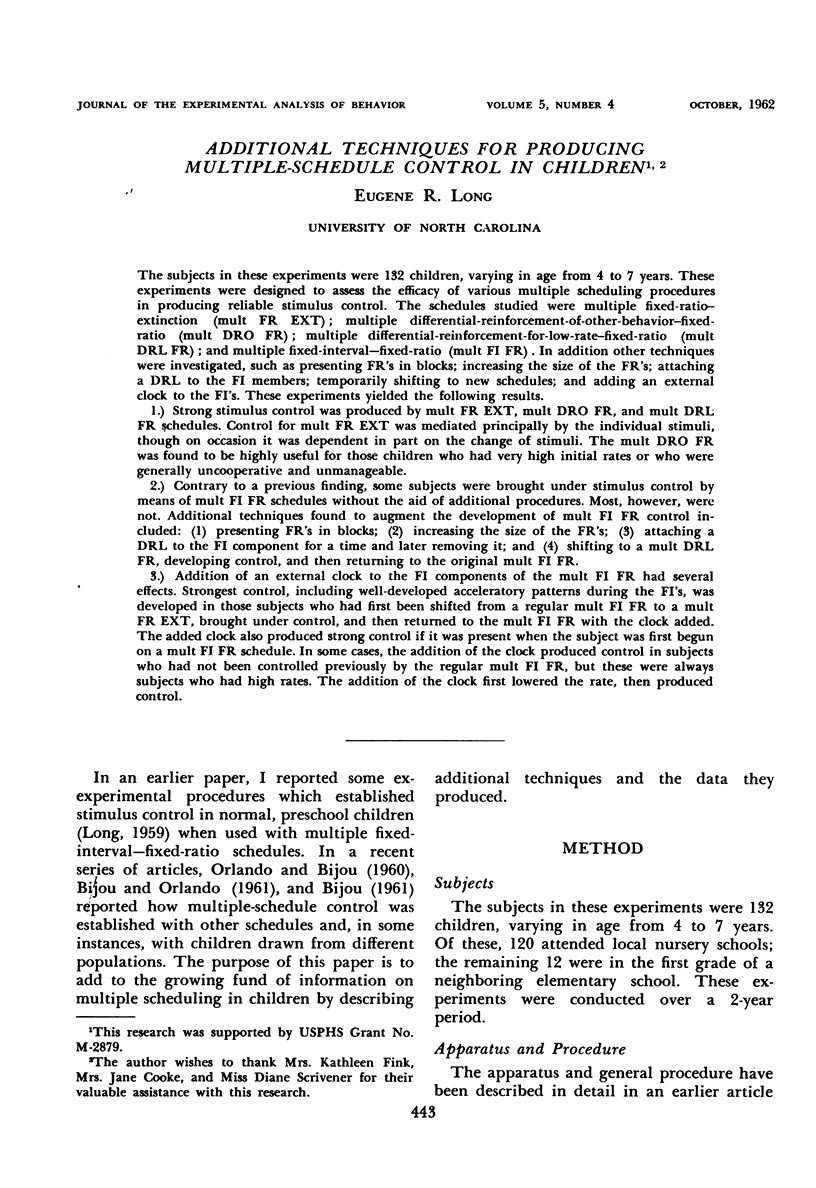
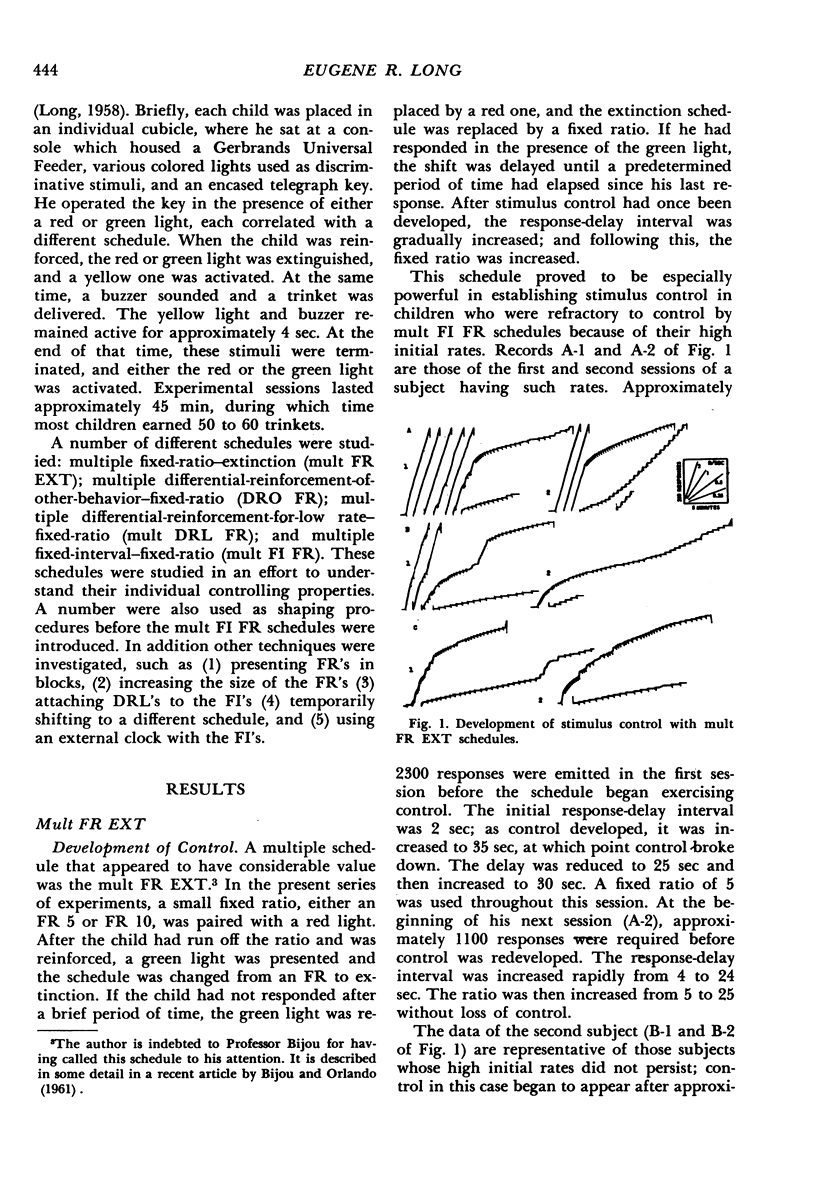

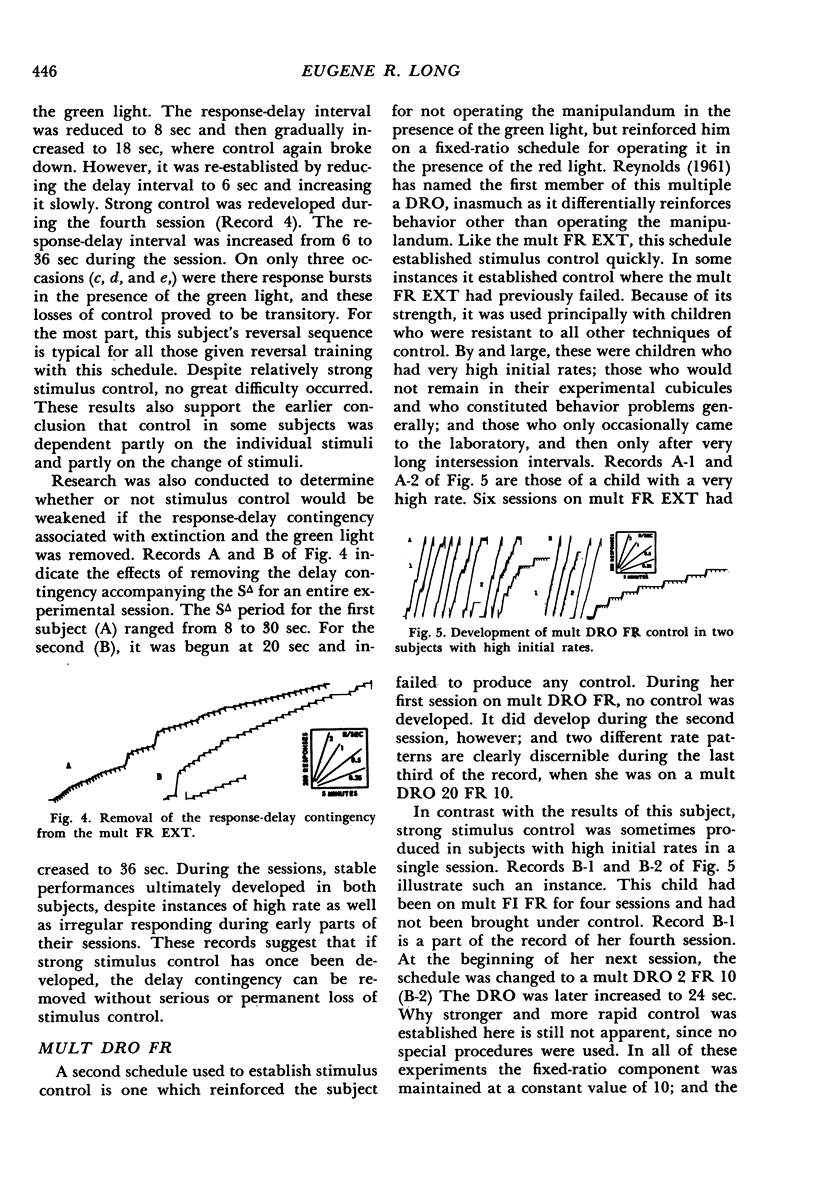
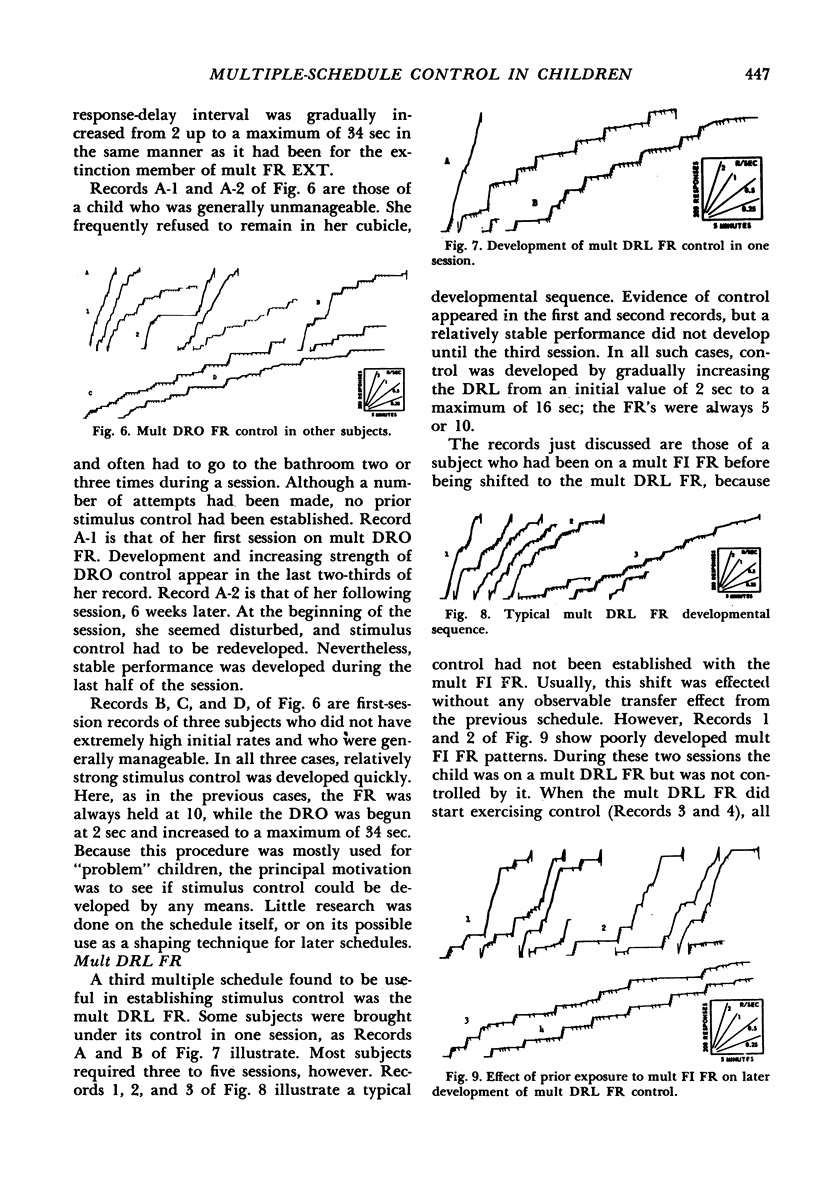
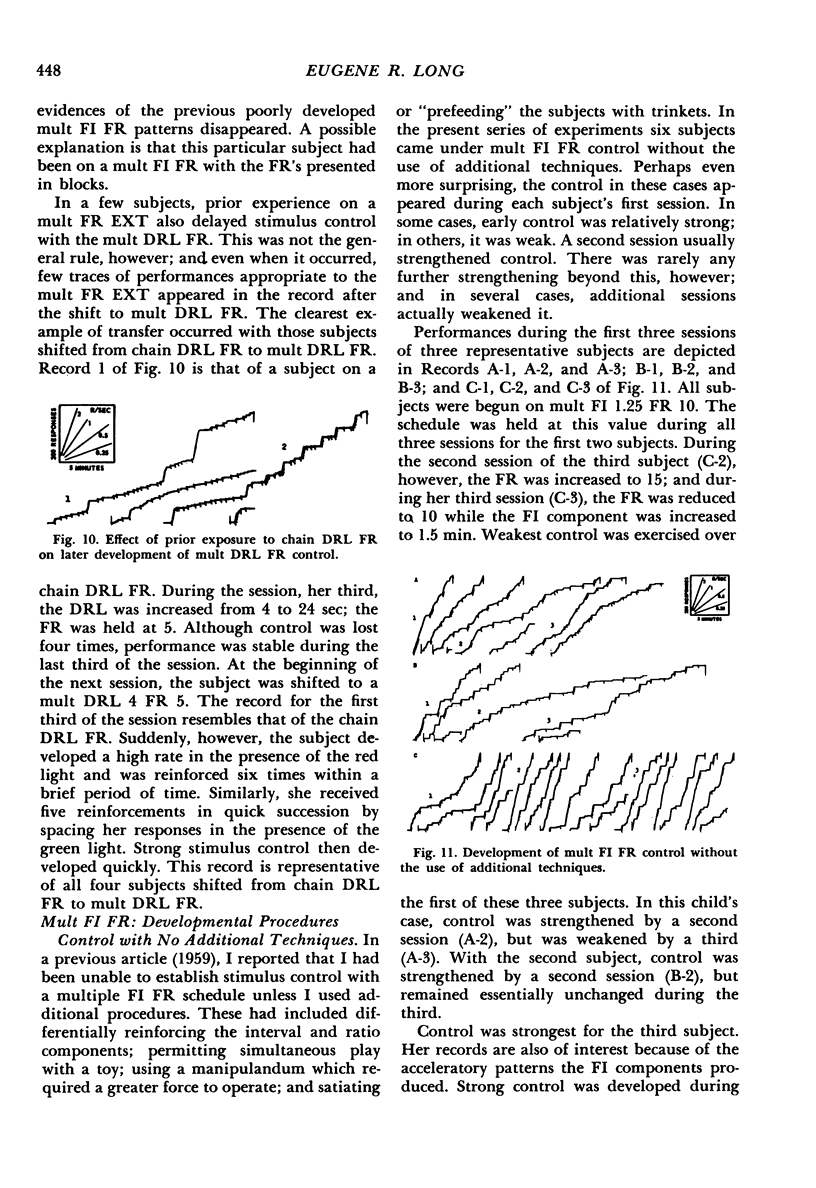
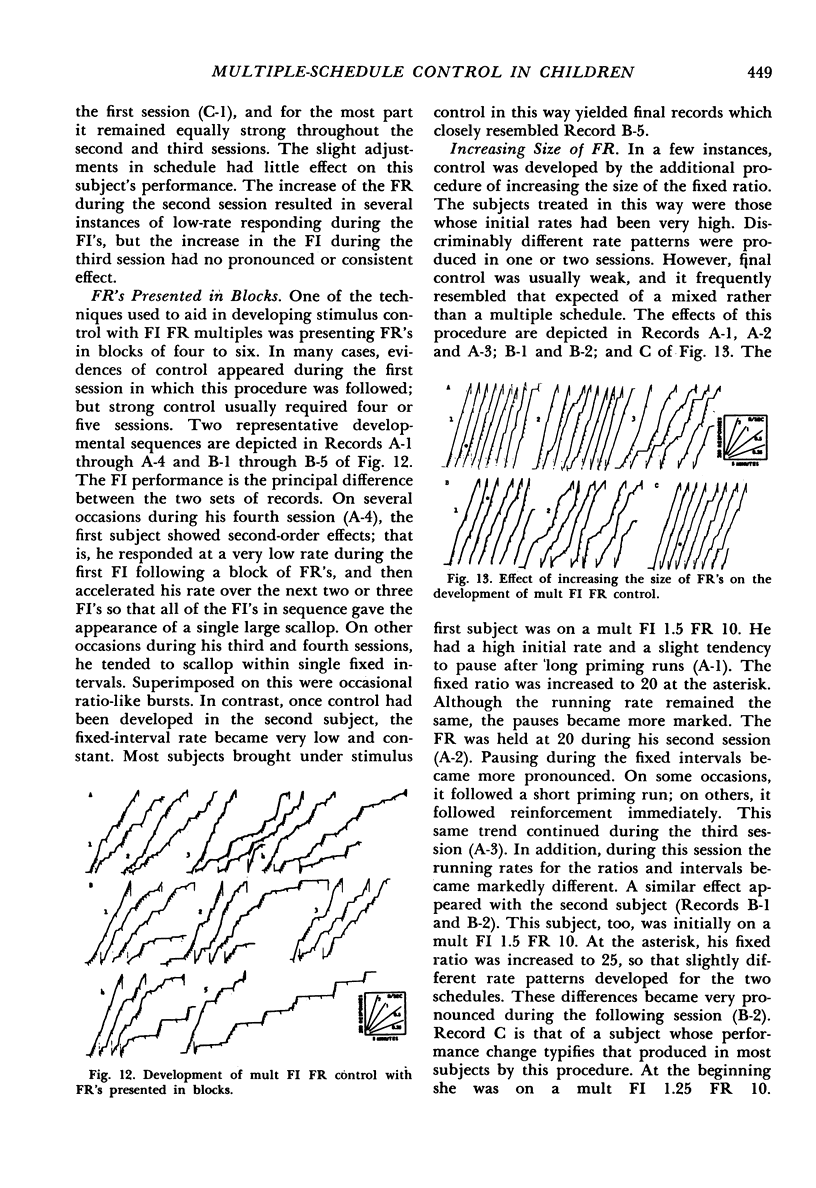
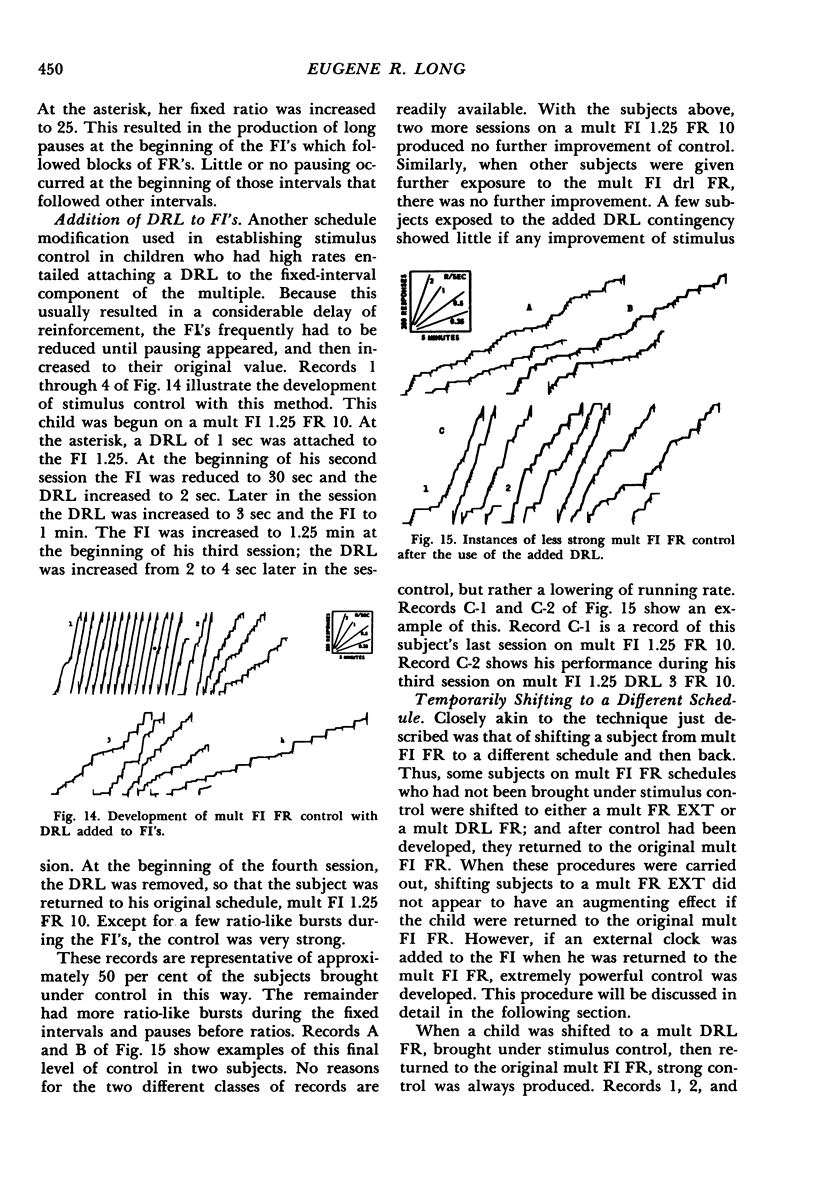
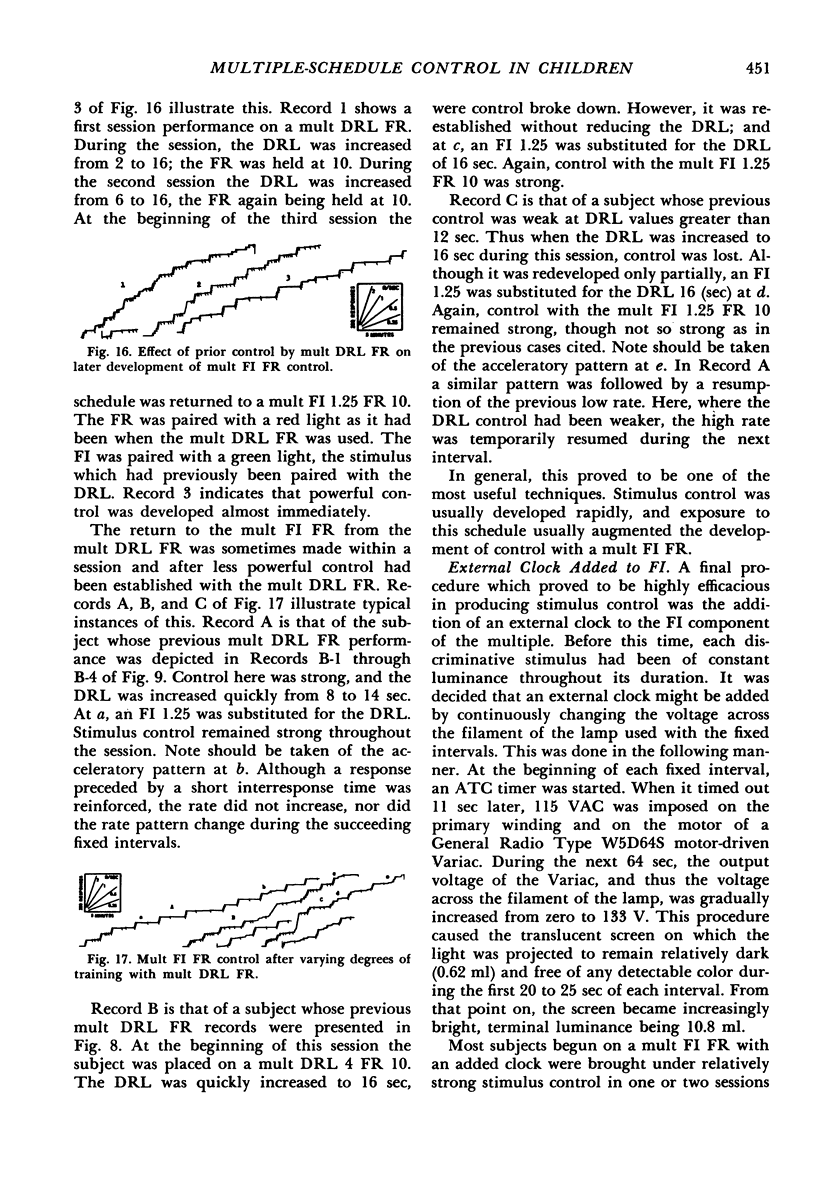
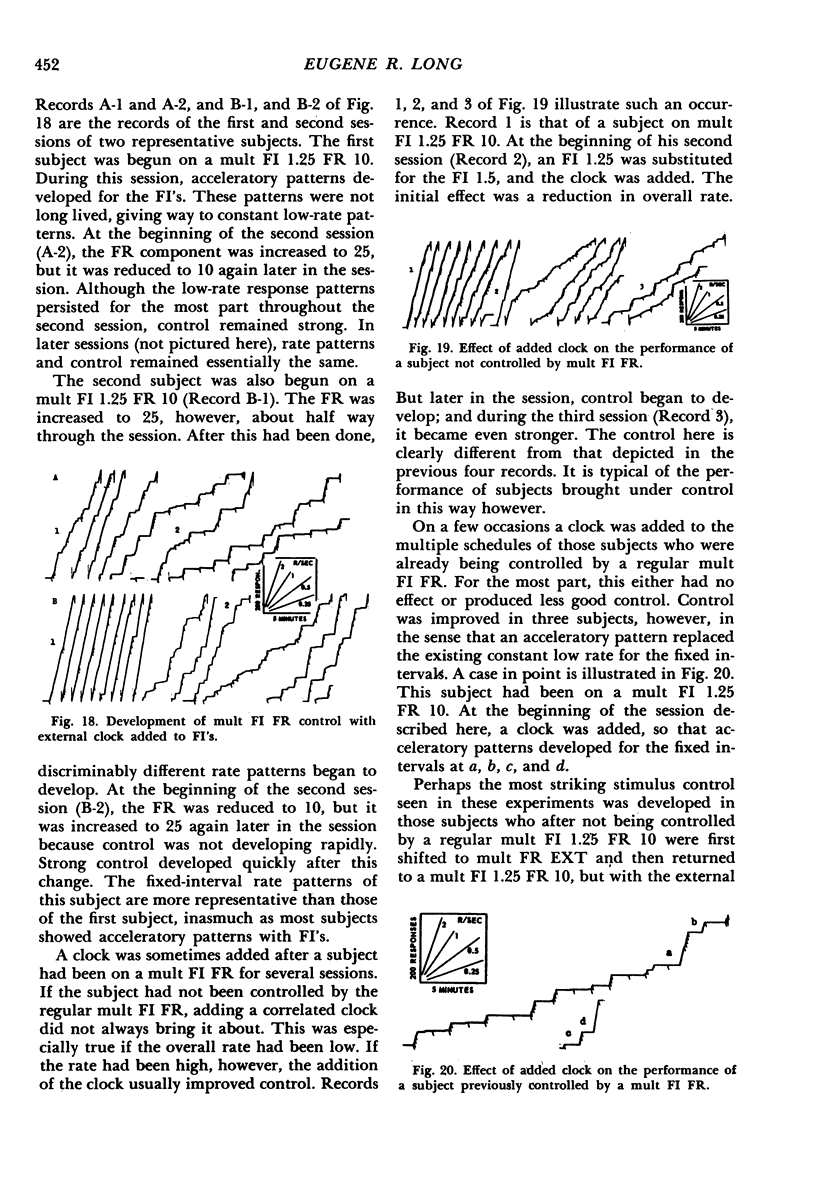
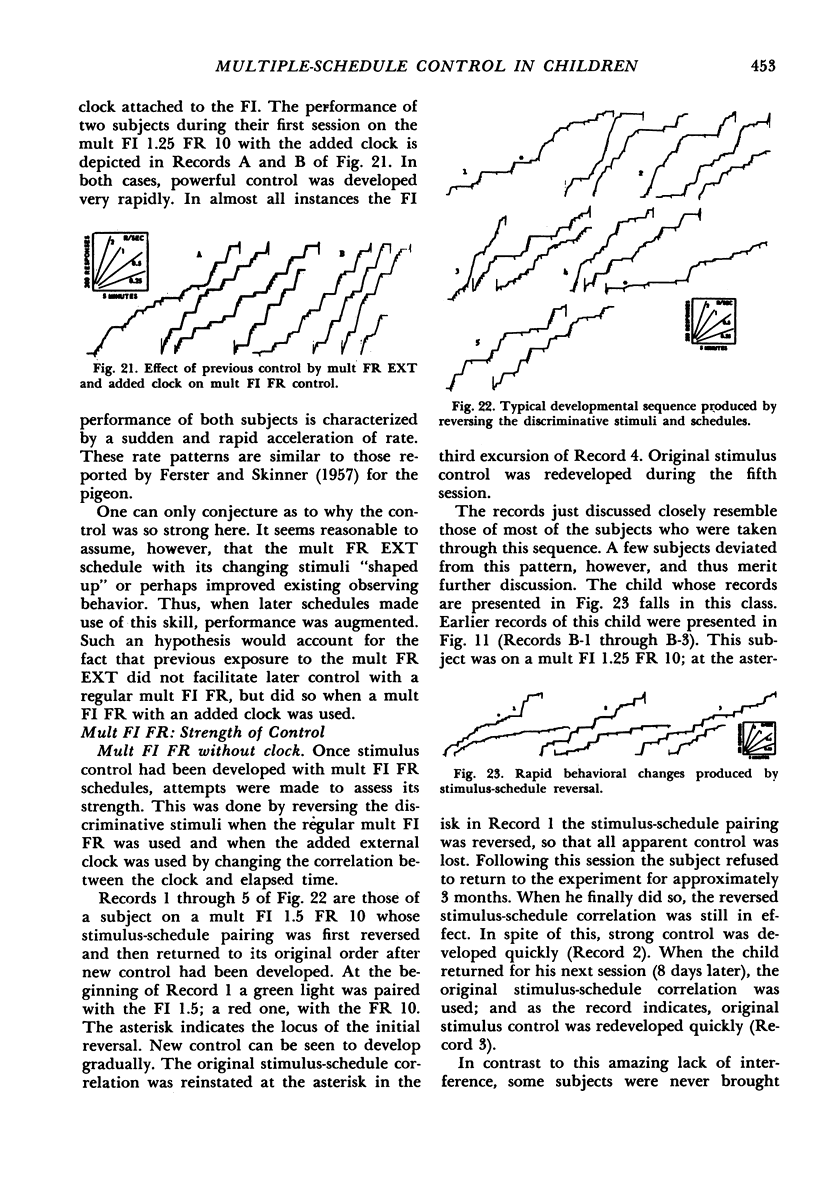

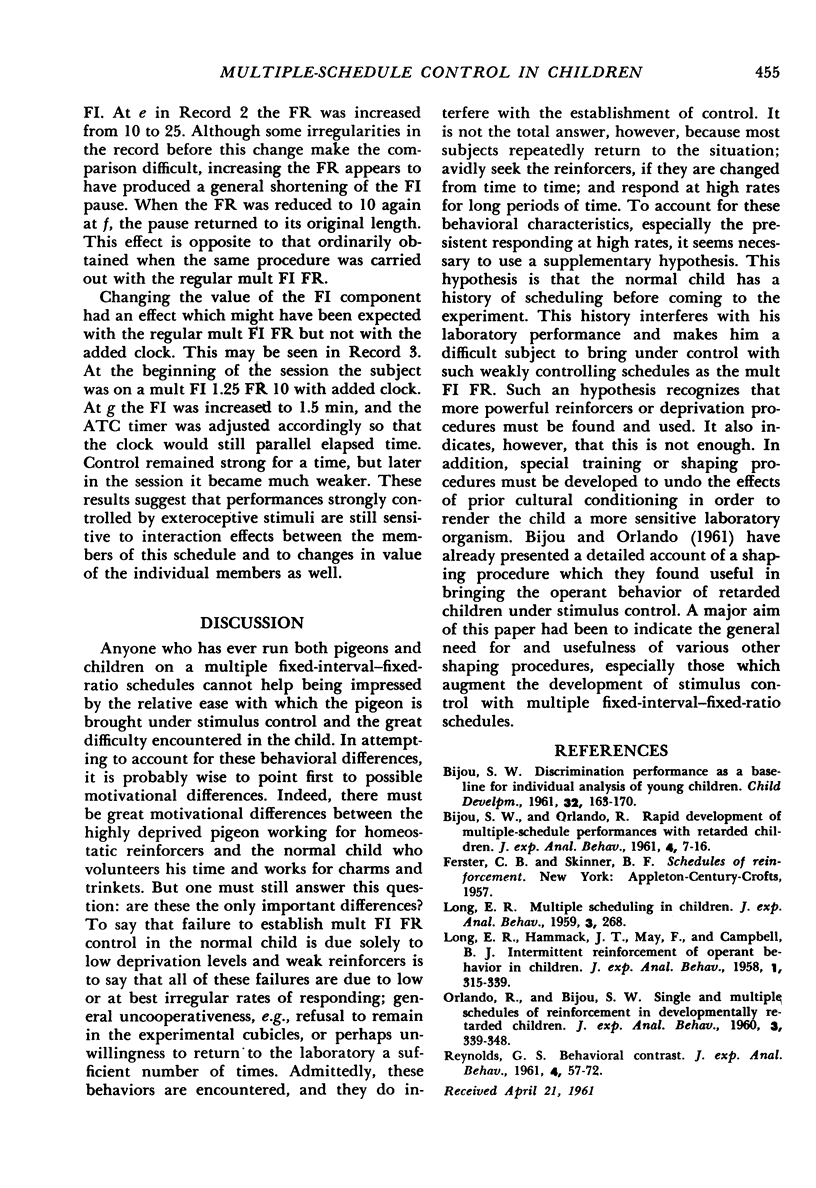
Selected References
These references are in PubMed. This may not be the complete list of references from this article.
- Bijou S. W., Orlando R. Rapid development of multiple-schedule performances with retarded children. J Exp Anal Behav. 1961 Jan;4(1):7–16. doi: 10.1901/jeab.1961.4-7. [DOI] [PMC free article] [PubMed] [Google Scholar]
- Long E. R., Hammack J. T., May F., Campbell B. J. Intermittent reinforcement of operant behavior in children. J Exp Anal Behav. 1958 Oct;1(4):315–339. doi: 10.1901/jeab.1958.1-315. [DOI] [PMC free article] [PubMed] [Google Scholar]
- ORLANDO R., BIJOU S. W. Single and multiple schedules of reinforcement in developmentally retarded children. J Exp Anal Behav. 1960 Oct;3:339–348. doi: 10.1901/jeab.1960.3-339. [DOI] [PMC free article] [PubMed] [Google Scholar]
- REYNOLDS G. S. Behavioral contrast. J Exp Anal Behav. 1961 Jan;4:57–71. doi: 10.1901/jeab.1961.4-57. [DOI] [PMC free article] [PubMed] [Google Scholar]


